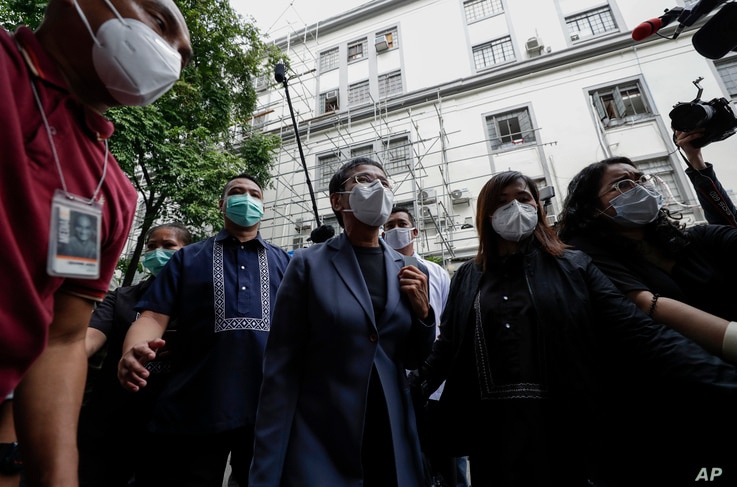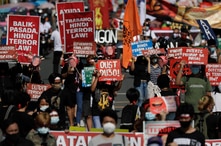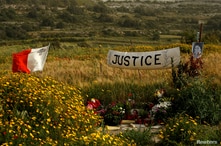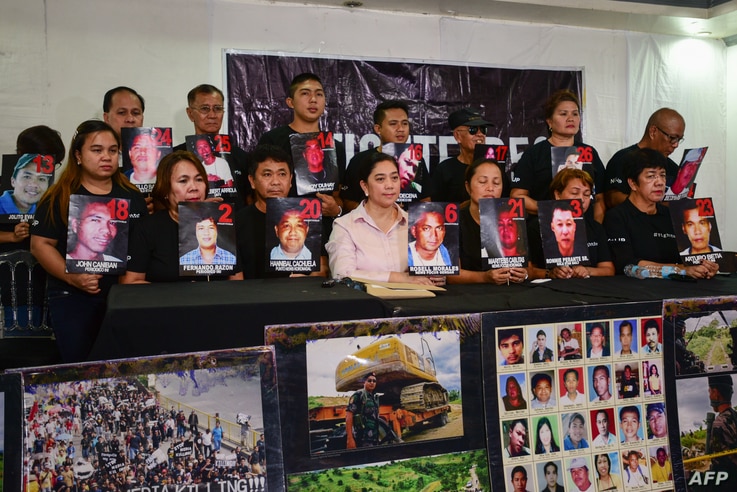The phone calls came to his newsroom and his home. The person on the line told whoever answered that Joe Torres should “take care.” But the threats didn’t stop there. Armed men would follow the veteran Filipino journalist and “really show themselves.” Once, someone fired shots outside Torres’ house.
At the time, Torres was covering the armed rebels, the Abu Sayyaf Group, and digging into the criminal history of a local political clan. The clan was the bigger menace.
“I traced several killings to [a political] family,” said Torres, 54. “The government even actually investigated them. My story started it all, so I think that’s why I received a lot of threats.”
This was in the mid-90s, but it could have been yesterday. Journalists in the Philippines still face serious threats for independent reporting that makes powerful people look bad. By many accounts, conditions are more dire than ever for reporters like Torres.
Of late, the big press freedom story has been about autocratic President Rodrigo Duterte and his fight with the national media, including the trial of Rappler and its executive editor, Maria Ressa. But it is coverage of local politicians, particularly those in the drug trade, that pose more danger to press freedom than anything else, said Torres and other Filipino journalists.

Overall, press freedom is at its lowest point in the country since the 1970s, media watchers say, as politicians and criminal elements act with impunity, using legal action to intimidate national figures such as Ressa and pressure news outlets — especially those in the provinces — to decide between chasing a story or censoring it just to survive.
These risks came to the fore on September 14, when gunmen shot dead Jobert Bercasio, a former radio journalist in central Philippines. Bercasio covered issues such as illegal logging on his social media news website, Balangibog. Days before his killing, the journalist reported on unusual activity near a quarry. The killing grabbed the attention of UNESCO Director-General Audrey Azoulay, who called for an investigation.
In a separate incident the same week, a former city councilor, Plaridel Nava, allegedly sent private messages to the editor of the Daily Guardian, threatening physical violence after the paper reported on his dismissal from office, the National Union of Journalists of the Philippines reported.
“The impunity with which journalists continue to be attacked and killed is the same impunity that drives the continued killings in the government’s war on drugs and the continued assassinations of activists and human rights defenders,” the union said in a statement posted to the Bulatlat news website.
The family influence
Duterte’s disregard for the media and his war on drugs have created a poisonous atmosphere for independent news. A report last month by the New York-based advocacy group Human Rights Watch places the total killed without trial in the anti-drug campaign at 5,810.
 Philippines Denies Claim of Increased Police Drug-Related KillingsHuman Rights Watch says killings rose 50% from April through June as Filipinos stayed indoors to slow COVID-19 spread; presidential office rejects the findings
Philippines Denies Claim of Increased Police Drug-Related KillingsHuman Rights Watch says killings rose 50% from April through June as Filipinos stayed indoors to slow COVID-19 spread; presidential office rejects the findings
Local reporters seldom tangle with Duterte, who came to power in 2016, because they cover central government less. But they face a lot of what Torres found: political families with deep business connections who sometimes run provincial media outlets or threaten reporters who dig up problems.
Wealthy families have powerful sway in parts of the southern Philippines because of their history as plantation owners in a region with spotty land reforms, said Eduardo Araral, a Philippine-born associate professor at the National University of Singapore's school of public policy.
Economic power lets the families wield political control, and they may see newcomers as rebels, Araral said. He described their outlook as “clannish” and “tribal.”
Political families also use official channels to steer news coverage. Some have stakes in newspapers and radio stations, or try to use influence at press clubs to try to pressure journalists either through direct orders on coverage or indirect means such as funding and job security.
Gualberto Laput, a 54-year-old career reporter, says he has tried to bring local journalists together so they can cover news free from influence.
But while president of a press club on the southern island of Mindanao in 2004, Laput said he found that politicians controlled that organization as well as a second club in his province. The politicians tried to use their influence at these clubs to steer coverage toward their economic or political interests, Laput said.
At the club, he set up workshops and lectures on journalism to “eradicate political intervention.” But, he said, he found that intervention would creep back in ahead of elections. “I constantly reminded [people at club events] that if we are together, politicians will listen to us, and will not throw their weight on us,” Laput, who now reports for Rappler, said. “But when election season begins, we're back to our political divide — for money.”
Each of three political families in Zamboanga del Norte, a province in Mindanao, where Laput works, has its own newspaper. The province is ever on edge for attacks by rebels and, as in other parts of the country, wealthy families compete for political control, usually in a single city or province.
Politicians know nothing about “media ethics,” Laput said, and use their publications as tools to attack their opponents or harass journalists who write critical reports.
“Because of the setup of our media here in this part of Mindanao, the readers no longer know what news is,” Laput said. “The warring politicians — each side has their own media.”
Laput cited an ongoing 2018 between an electric company and a local governor as an example. He says that the provincial governor, Roberto Uy, used a local radio station under his control to criticize the company’s managers.
A person close to the governor’s office, who asked for anonymity to speak about the case, told VOA in October that the governor’s son owns a radio station. But they did not directly respond when asked whether the airwaves were used to slam the power cooperative. The electric cooperative owns a station, as well, the source said, and “bought airtime on other stations to attack the governor.”
The source added that customers had been overcharged and provincial officials suspected “something fishy.”
Uy’s office did not provide official comment to VOA.
Positive spin for a price
Low wages for Filipino journalists exacerbate the problem of political influence. The average salary for a Filipino journalist is $280 per month (13,776 Philippine pesos) and many reporters work too many hours to take on side jobs.
With such economics, some take cash from the very people they cover, then report what those sources — police for example — want to hear, veteran journalists say.
That cycle adds to corruption instead of exposing it. Some crime beat reporters take the equivalent of $100 from police in exchange for agreeing to say that a suspect was found carrying drugs, Torres said. Officers from the same police plant the drugs, he said.
Poor working conditions increase the likelihood of bribery, a report by the U.K.-based independent Ethical Journalism Network found.
The report, published in 2015, found evidence of unethical practices in several countries including Ukraine, Nigeria, Colombia and the Philippines.
It listed conflicts of interest in the Philippines including working for political campaigns while employed as a reporter or being asked by media outlets to secure advertising from local businesses. Other unethical behaviors cited were payments to use news reports to attack a rival, kill off an article or take bribes from police or security officials, the report found.
Newsroom bottom lines also factor into discussions on coverage.
“The Philippines, just like other countries in Asia, is experiencing what I like to call a ‘publish and perish’ phenomenon,” said James Gomez, regional director of the Asia Centre, a Bangkok-based think tank.
“If the media outlet publishes noncritical information news, then they are very much left alone. However, if they publish information critical of the political regime or lead political figures, then these outlets and specific journalists come under [legal or financial] attack,” Gomez said.
Officials unhappy with news content either target high-profile reporters and editors or use legal sanctions, Gomez said. They intervene in licensing and withdraw advertising to weaken a media outlet’s business.
Paid-off journalists still face threats from the political rivals of whoever offered the money.
Jose Jaime Espina, chair of the National Union of Journalists of the Philippines, said, “[c]onditions such as these do push many journalists toward corruption, not difficult in a country where patronage politics remains the norm.”
“In many cases, politicians retain journalists to promote them and attack their foes. This often exposes the journalist to possible retaliation by the patron’s foes, as has been the case in a number of media killings,” Espina said.
The Philippines has had a poor record for securing justice in journalist killings, according to data from the press freedom organization Committee to Protect Journalists (CPJ). Its record improved in the 2020 Impunity Index, released Wednesday, in part because a 2009 massacre, during which 58 people, including 30 media workers, were kidnapped and eventually killed, no longer fell within the index period.
 Progress Is Slow Securing Justice for Journalists Entrenched impunity and lack of political will is slowing efforts to bring killers of journalists to justice, annual Impunity Index finds
Progress Is Slow Securing Justice for Journalists Entrenched impunity and lack of political will is slowing efforts to bring killers of journalists to justice, annual Impunity Index finds
A regional court last year convicted 28 people for their involvement in that attack. But the Philippines still has 11 unresolved cases from the past decade.

“The bulk of media killings remain unsolved, a dismal record,” Espina said. “Hopefully, when a better, more humane government comes along, proposing reforms will not be such an exercise in futility.”
In many cases, killings can be traced to local politics and local issues, said Torres, now a writer with the Catholic news website LiCAS News Philippines. Journalism trade groups should train frontline local reporters — those most likely to be killed — on how to keep safe while getting their jobs done, he added.
When Torres received threats, his family’s “political friends” on the island of Mindanao “had to talk to the other political family not to touch me,” he said.
Torres was able to stay safe, but threats can carry over into physical violence.
Nearly all the journalists killed in direct retaliation for their work in the Philippines over the past decade were threatened beforehand. Nearly all covered corruption and politics, according to CPJ, which documents journalist killings globally.
Reporters doubt that truly independent journalism will flourish anytime soon. The Philippine government should enforce labor laws to ensure reporters are treated properly as media company employees, Espina said.
Perceptions that the media collude with sources are disillusioning Filipino news audiences, Espina said, in turn numbing them to reports of journalists being killed.
“Ethics are … a major problem, not just among severely underpaid community journalists but also among more established practitioners in major outfits,” he said. “And because trust in media has plunged, there is also little sympathy from the public when journalists are attacked or killed.



